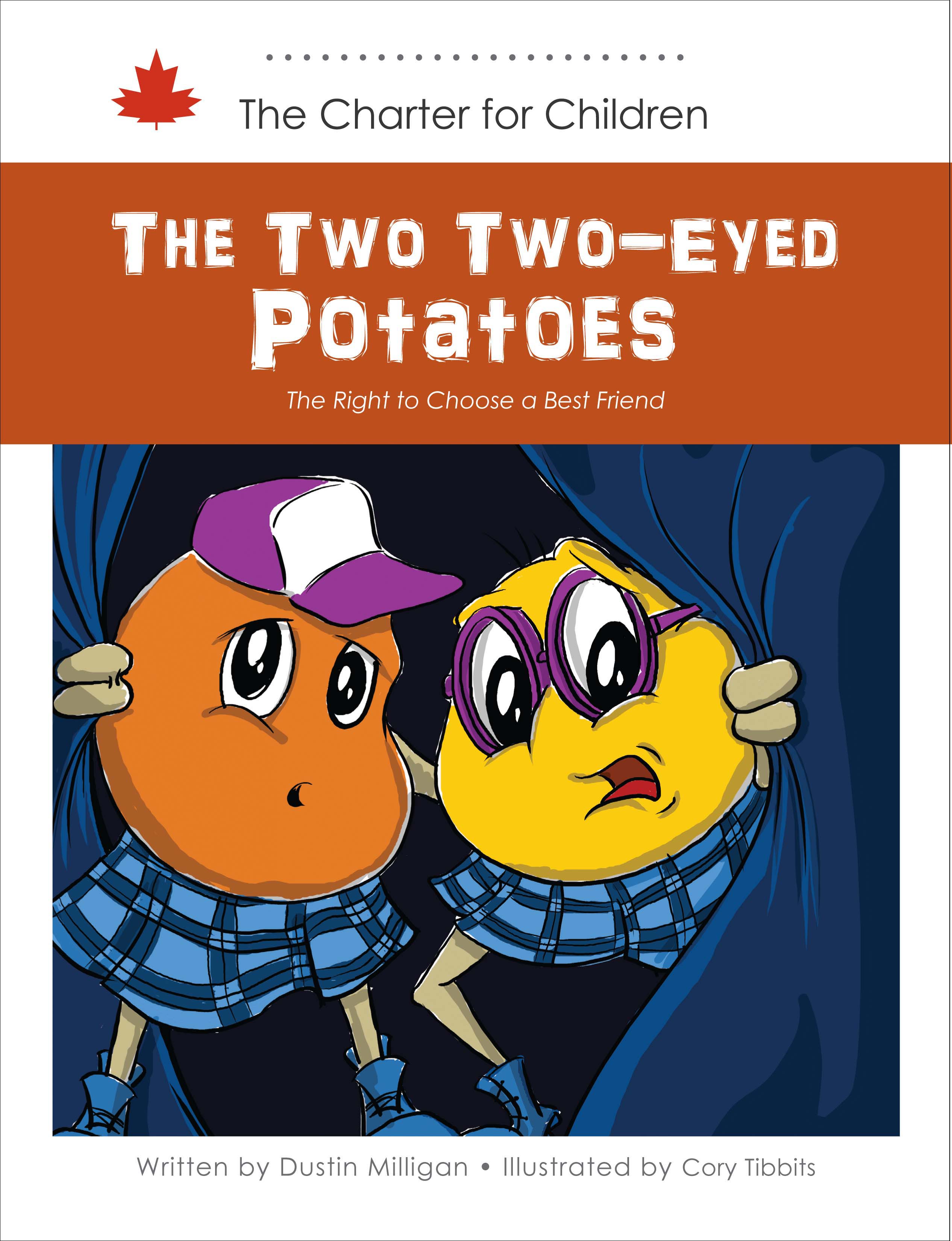How do spuds choose their best friends?
In the children’s book, The Two Two-Eyed Potatoes, Dustin Milligan uses fictional characters and events to answer this question.
At the Abegweit Warehouse, all potatoes follow the rule that spuds must only be best friends with taters having a different number of eyes from each other — opposite and never equal! Any potatoes who dare break this rule end up becoming curly cut fries.
However, when Taylor meets Jordan, the two two-eyed potatoes immediately hit it off. Afraid of punishment, they avoid meeting each other only to end up depressed and lonely.
Soon, they can’t take it anymore and decide to stand up to Spuddy MacSpudster, the leader of the Warehouse. Mustering their courage, the two friends show up together at the annual Potato Bloom Festival.
Holding hands they approach the crowd and make their way to the stage through the parted crowd. In a moving speech Taylor pours out his emotions to all the potatoes. His speech takes effect, and the whole town unites forcing MacSpudster to change the rule:
No matter the number of eyes on your skin,
It’s all about love and beauty within!
Equal respect for each spud, we agree,
Whether one-eyed or two or for that matter three!
The Two Two-Eyed Potatoes, along with Little Courthouse on the Praire, Bario Leblieux and An Unusual Thrill on Parliament Hill, complete a 14-set book series by Milligan, which aims to empower children.
Produced in collaboration with DC Canada Education Publishing, the series uses colourful illustrations, poetry, significant historic characters, references from Canadian culture and storylines that strike a chord with the reader.
“It’s important to teach children about the Charter,” says Milligan. “I believe it provides them with a sense of empowerment, as they can understand the rights they have as every day Canadians.”
Milligan, a Prince Edward Island resident, came up with this idea while at McGill Law School. He participated in a project involving elementary school students and found that copies of the Charter distributed in schools were hard to understand; he felt there was something lacking.
“I decided to create this resource to teach children about human rights,” says Milligan. “This series is really kind of trying to make it more engaging and use a fun creative manner.”
So, in 2007, he set about bringing the Charter to the children.
Seven years and 14 books later, Milligan has made the Charter accessible to kids of all ages. With 10,000 copies sold across the country, the series serves as an elementary school educational aid in schools Canada-wide.
Milligan believes, “It also helps promote a respect for Canadian diversity and hopefully fosters a respect for others from a very young age.”
And indeed it does! Milligan’s unique approach to these books simplifies the legalese of the Charter and make it very interesting and straightforward.
In 2012, the Charter turned 30-years-old, and we celebrated this milestone by ignoring it and instead spending millions of dollars on marking the 200-year anniversary of the War of 1812. The Conservative government tends to turn the other cheek where the Charter is concerned, believing that it is making the Canadian identity more individualistic than collective.
For Canada, to retain its identity as a liberal and accommodating society, future generations and those settling anew need to be made aware of the Charter.
“I started writing the story of freedom of expression,” explains Milligan, “and it was through that I then came up with the theme that flows through all the stories. After that, I sifted through the rights and listed the ones I felt were pertinent for children. I knew I wanted a story based in every province.”
All stories are truly Canadian with one originating within each province and territory, coming full circle in Ottawa with the 14th book: An Unusual Thrill on Parliament Hill, referring to the ‘reasonable limits law.’
Each book also cleverly incorporates Canadian references.
In the Hoofsteps of Emooly Murphy, the cow Emooly — the name an astute twist of amous Canadian women’s rights activist Emily Murphy — fights for equal rights for boys and girls at the famous Calgary Stampede.
In The Plight Beneath the Northern Light, polar bears in Nunavut explain the right to meet and form groups. Canadian Geese in the Northwest Territories bring to light rights based on Aboriginal heritage in The First Flock.
In Milligan’s books and these cultural hints, we find a reminder to Canadian values and beliefs that have helped make us one of the most culturally diverse countries. Introducing these books in the system as early as possible will revive the spirit that Canada has always strived for: Peace, Order and Good Government.
Mehreen Shahid defines her experiences in Canada using her writing skills and understanding of human psychology. She looks for stories around her that bud and blossom from ordinary human beings extending themselves to achieve extraordinary feats. She moved to Canada in 2011 with a degree in clinical psychology and is currently enrolled in a Journalism diploma at Sheridan College, ON.



